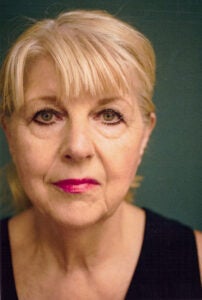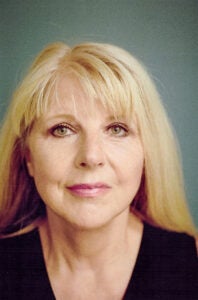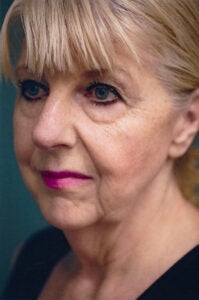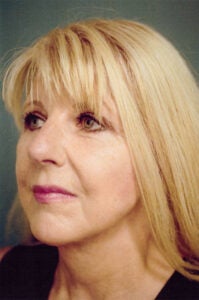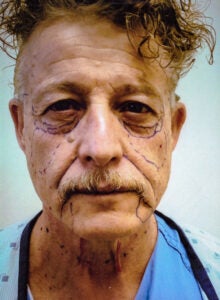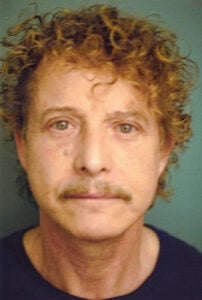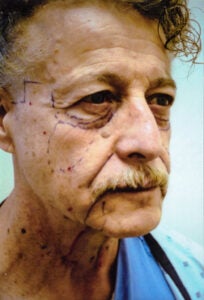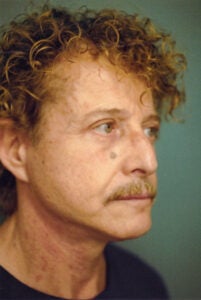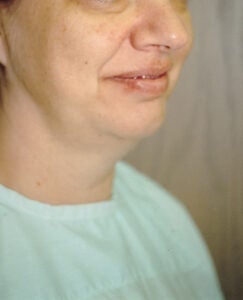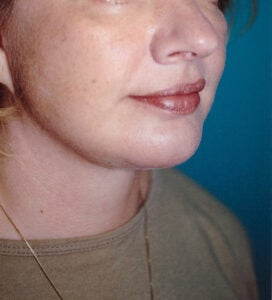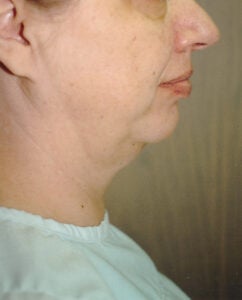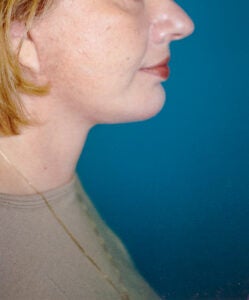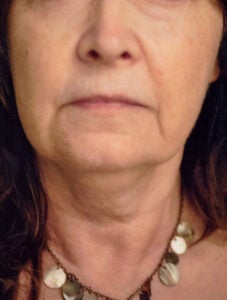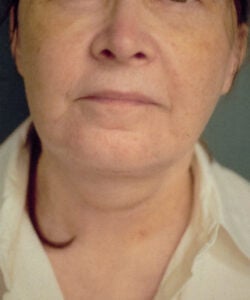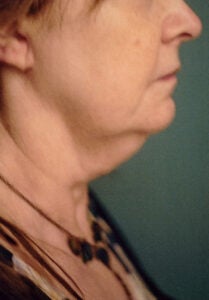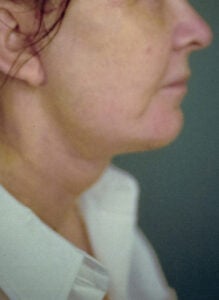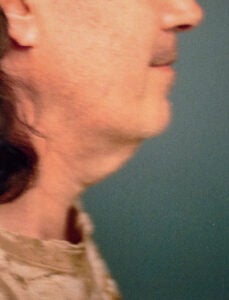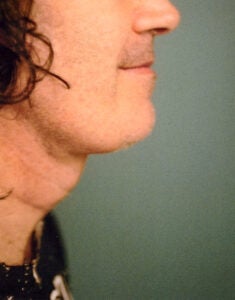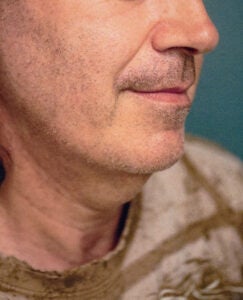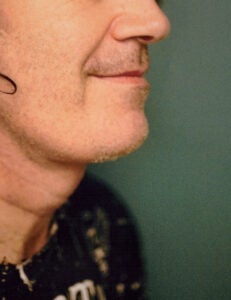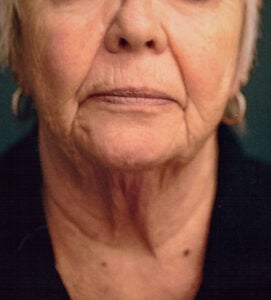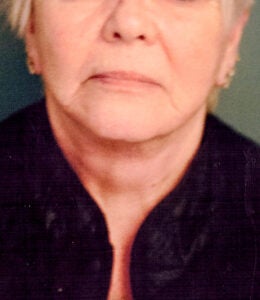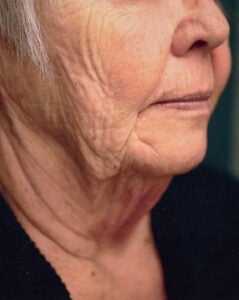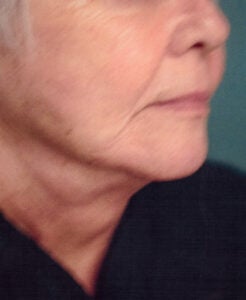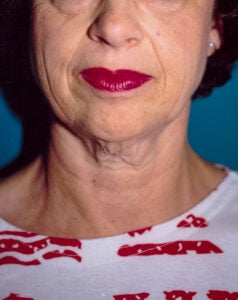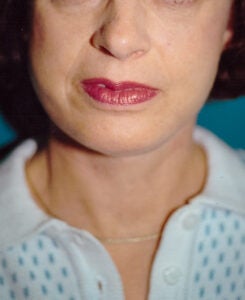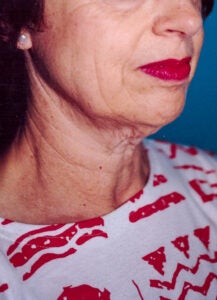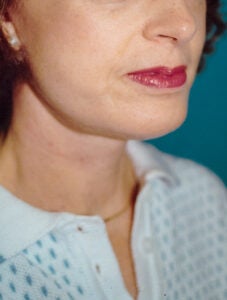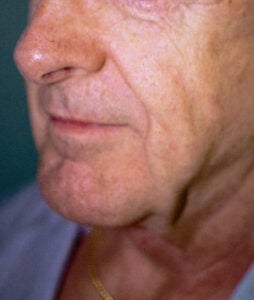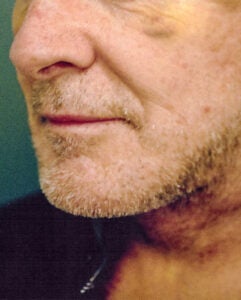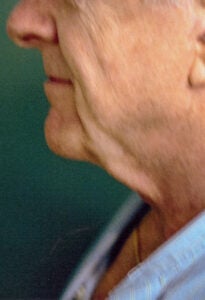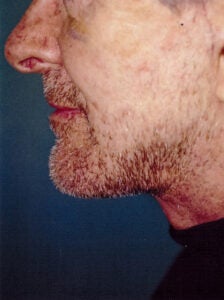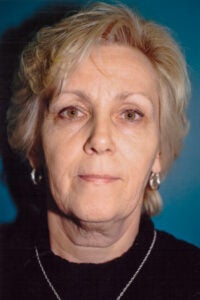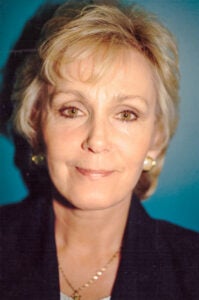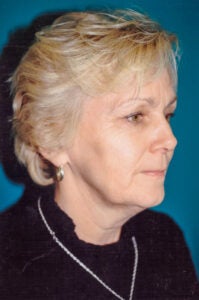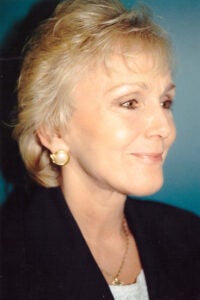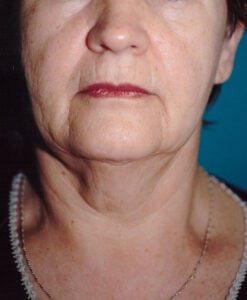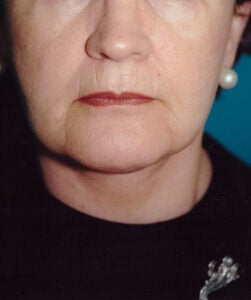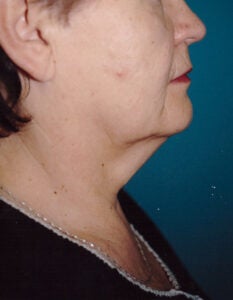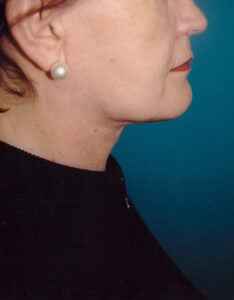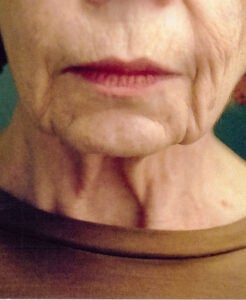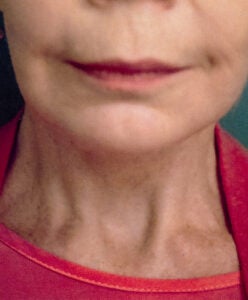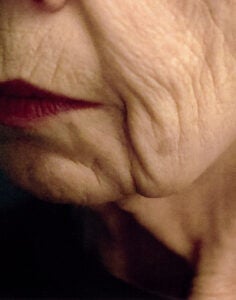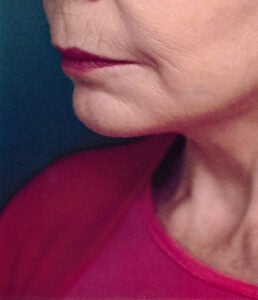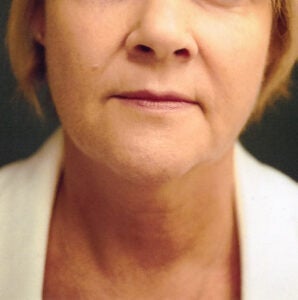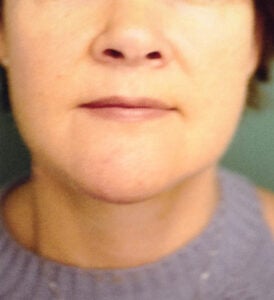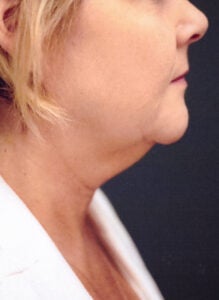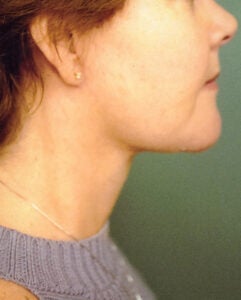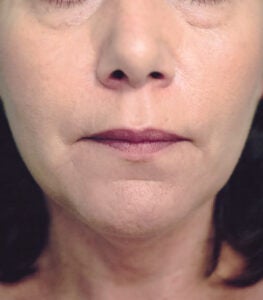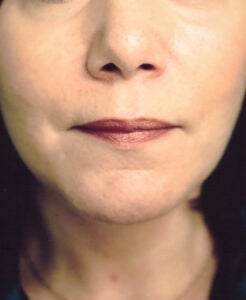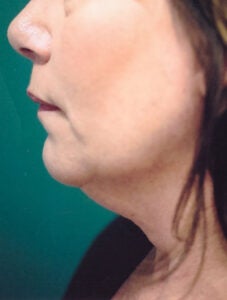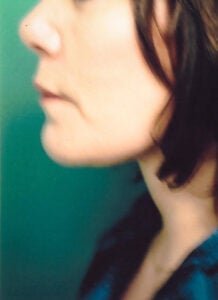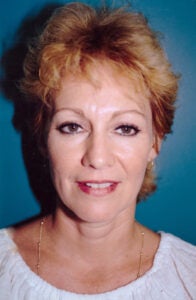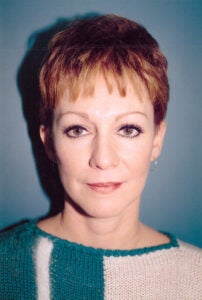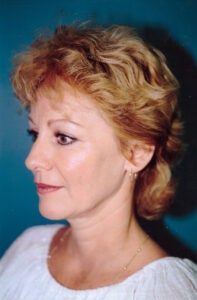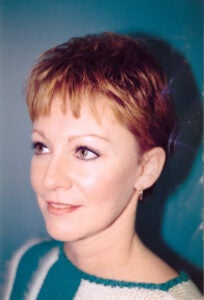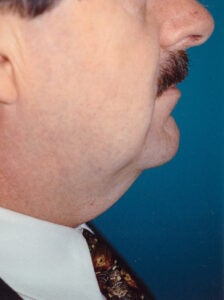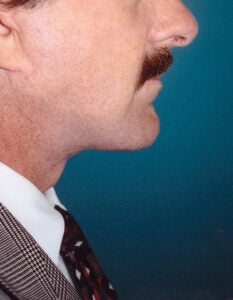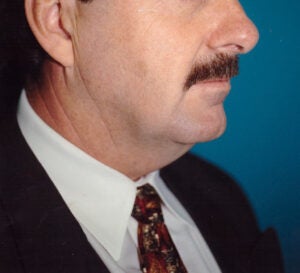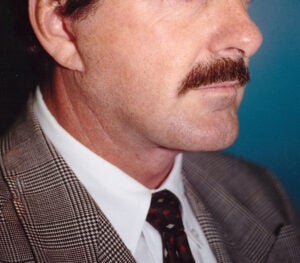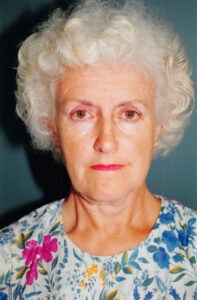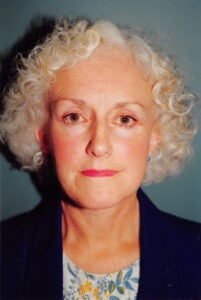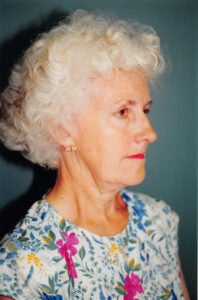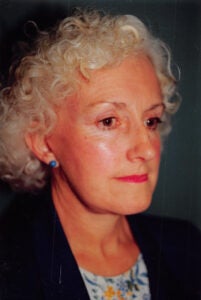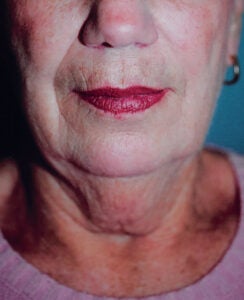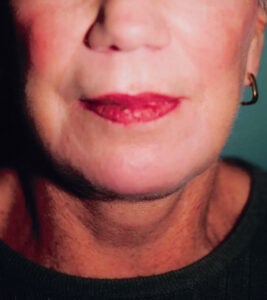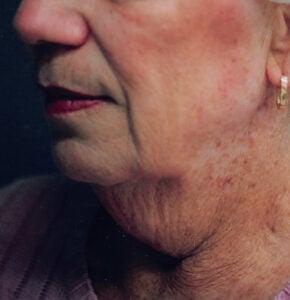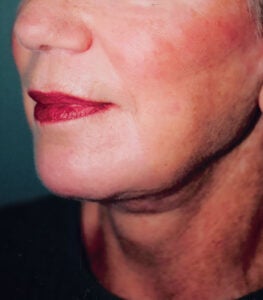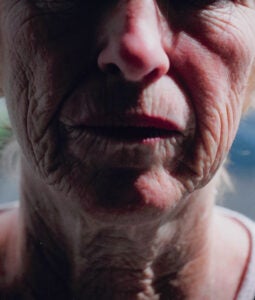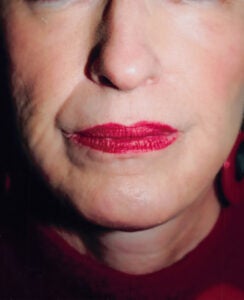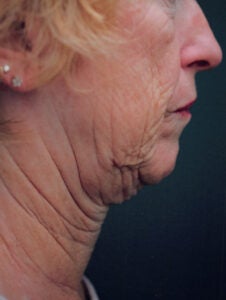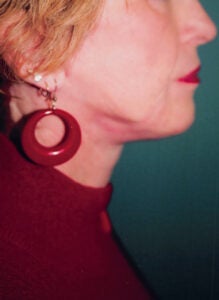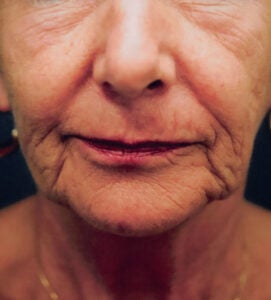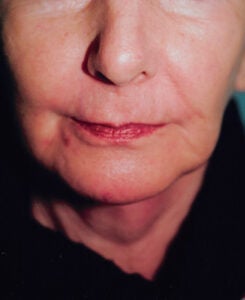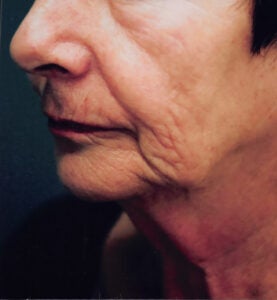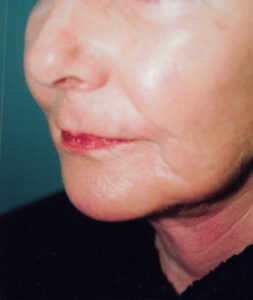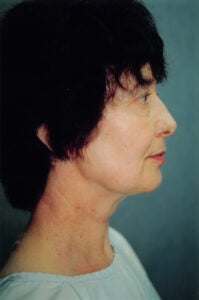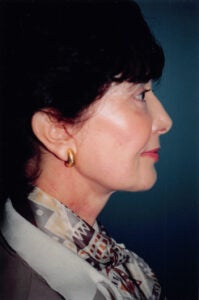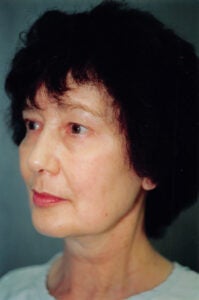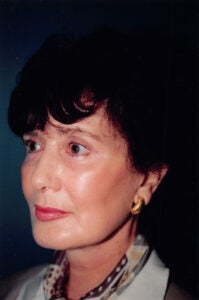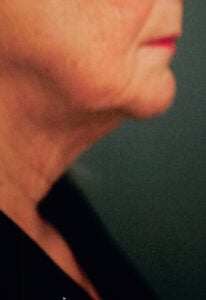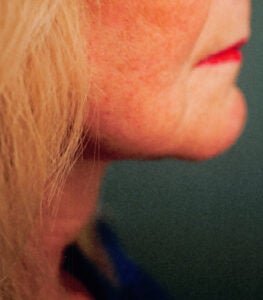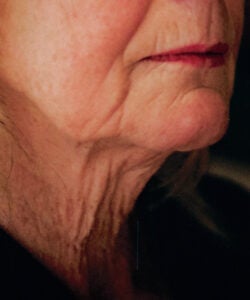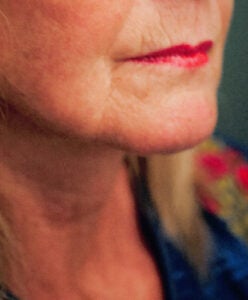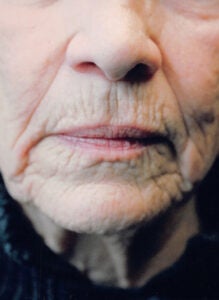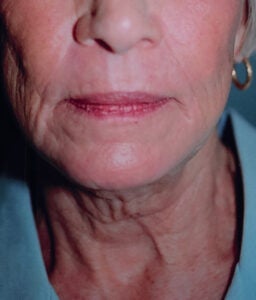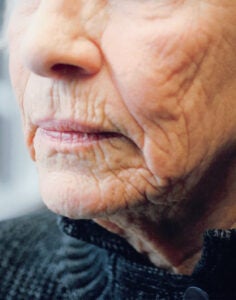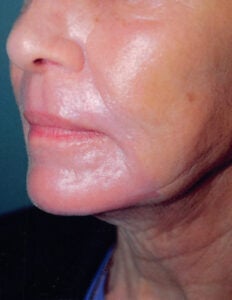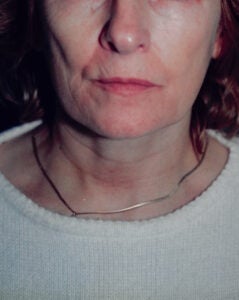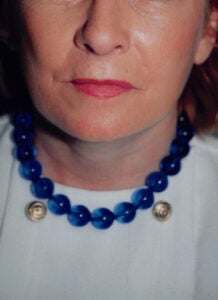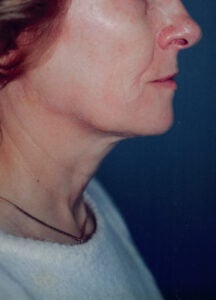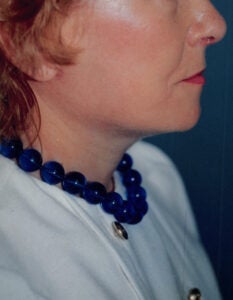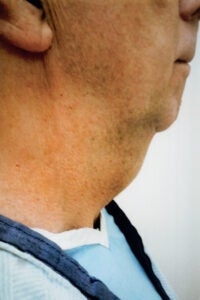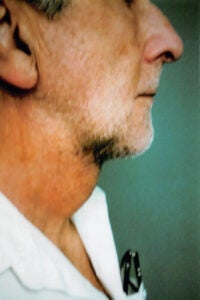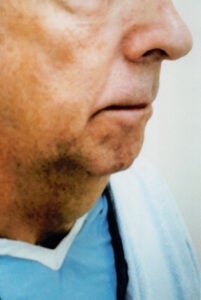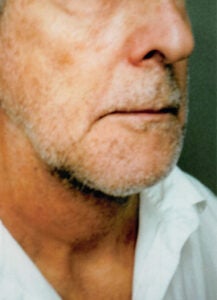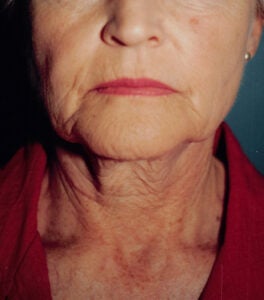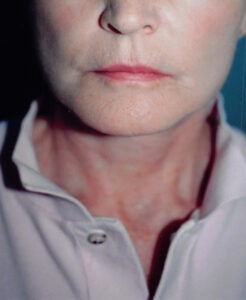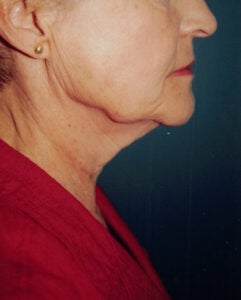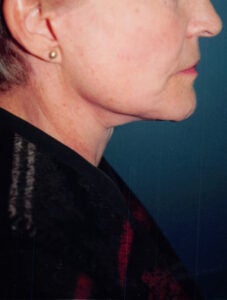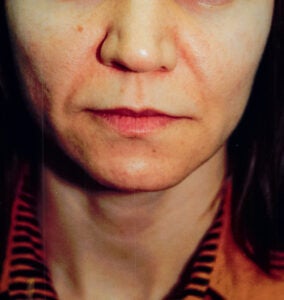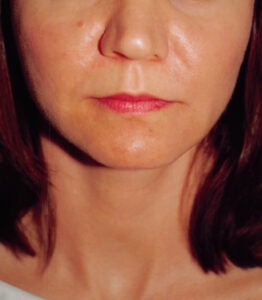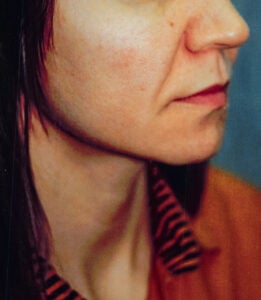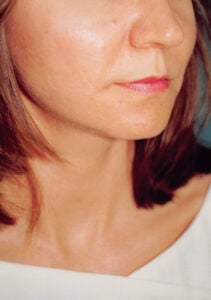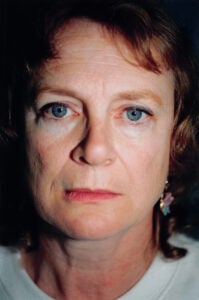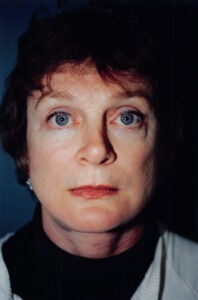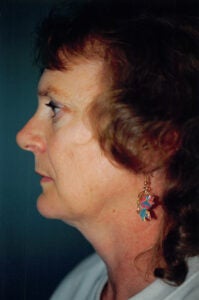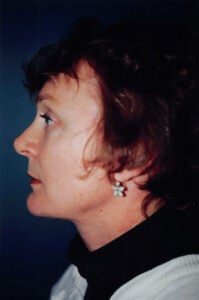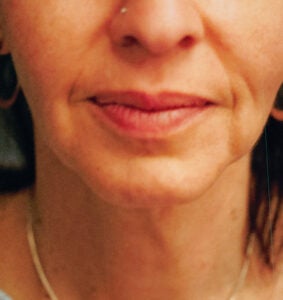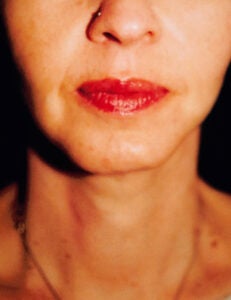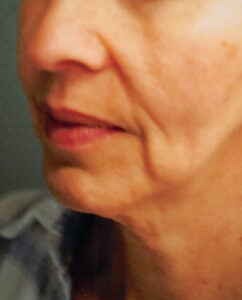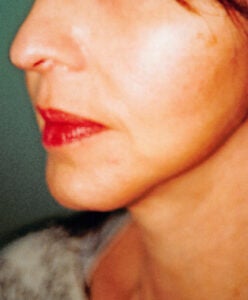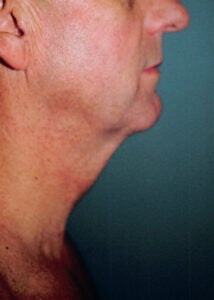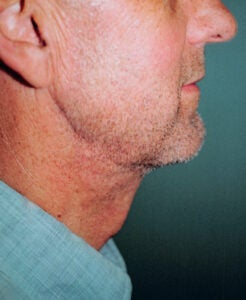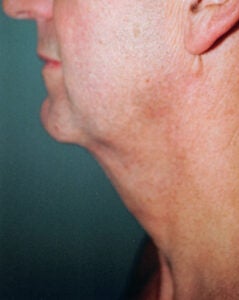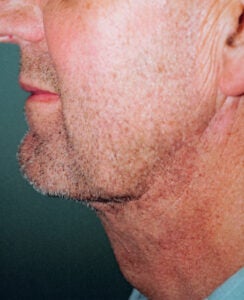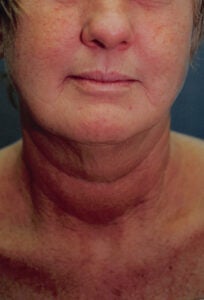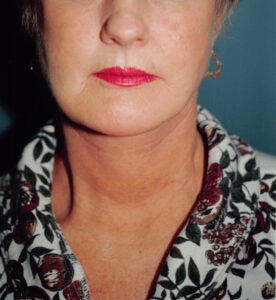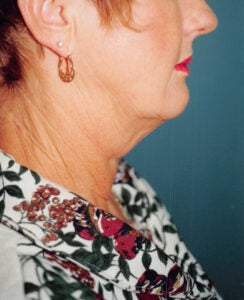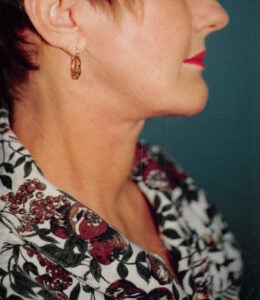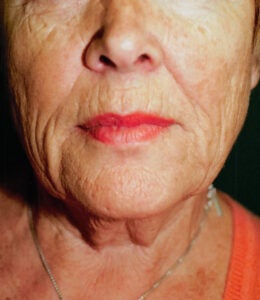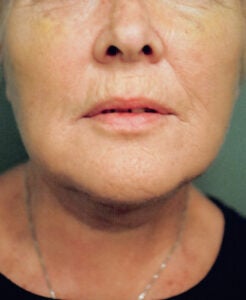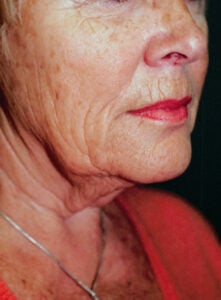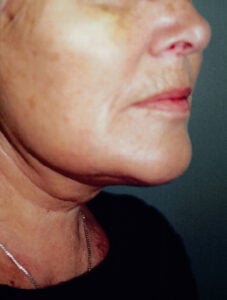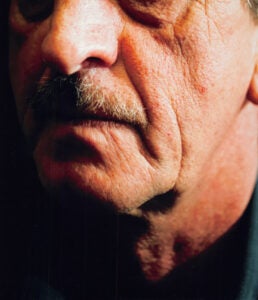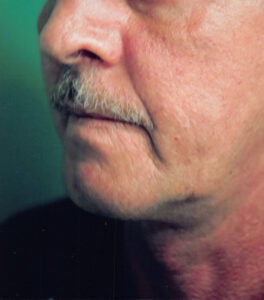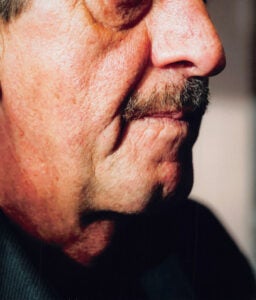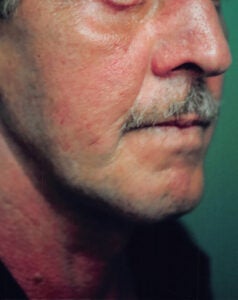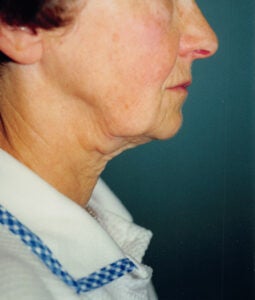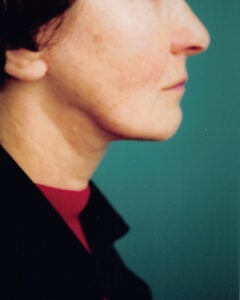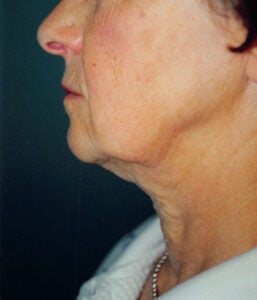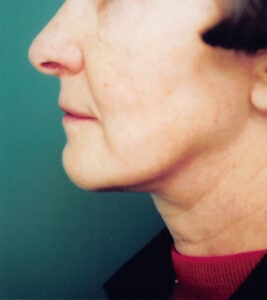Facelifts Vancouver
Safety and naturalness are paramount to facelifting. No two facelift procedures are the same.
It is important to have a palette of different techniques available, from MACS lift to facelift to LV facelift, to allow a custom designed procedure for every patient. When I first started doing facelifts years ago at the Mayo Clinic, the procedure consisted largely of skin elevation and removal. The procedure has become immensely more sophisticated throughout the years. Now we can modify the deep structures integral to the aging process. The support structures of the face and neck become attenuated with time, and we can address this laxity with thoughtful and precise surgical modification. The only skin removed is the excess skin created by improving the deep structures. The facelift is performed hiding the incisions in the hair and natural creases around the ear. Sutures are removed at seven days and then appropriate makeup can be used until the incisions have faded. Facelifts are frequently performed with other procedures such as the blepharoplasties, forehead lifts, structural fat grafting and chemical peels.
What is the LV facelift?
The “V” represents the number five as this advanced technique involves rejuvenating five layers in the neck including skin, subcutaneous fat, platysma muscle, subplatysmal fat, digastric muscle, and, if indicated, a hyoid fascia release. It represents the culmination of cutting-edge techniques refined by Dr Brown over decades of performing facelifts. Pain is very modest with most patients using only Tylenol or Tramacet. Although many patients feel comfortable returning to work within 2 weeks, others may wish to wait 3 weeks before returning to social engagements. We suggest a “vacation” where you return looking remarkably refreshed.
Patients usually have two consultations prior to surgery. Dr Brown prefers to spend one hour with each patient. There is a lot of information to absorb, so a second consultation helps “filling the gaps”. Please bring a photo of yourself from earlier times.
I felt that this lovely woman’s face did not match her very youthful personality. Subsequently we embarked on a surgical voyage including an LV facelift, upper and lower blepharoplasty, and structural fat grafting. Structural fat grafting consists of harvesting the fat, placing it into a sterile centrifuge, then decanting the stem cell rich fat cells. These are introduced through tiny slits, and are deposited with a series of passes leaving tiny droplets in layers in the recipient areas.
This very handsome gentleman had excellent bone structure to his face, but had undergone typical soft tissue changes. He had an upper and lower blepharoplasty, LV facelift, and structural fat grafting. The preoperative photo shows the areas destined to be rejuvenated with this elegant technique.
This professional woman in her 40’s wished to have her appearance improved. The fat pad or Bichat in the mid-cheek was refined, and in addition to a multiple layer approach to her neck, she had a hyoid fascia release. The retruding chin was augmented by a wide body geniomandibular implant.
This 60-year-old woman had structural fat grafting to deal with contour defects in her upper face as well as a multiple layer correction of her face and neck. The procedure involved deeper layers including the platysma, subplatysmal fat, anterior belly of the digastric muscle, and a hyoid fascial release. The post op photo is taken 7 days post op, just after her sutures were removed.
Despite diet and daily exercise, this gentleman in his mid fifties was unable to get rid of his “family neck”. An LV facelift including a suspension suturing technique to better define the jawline was carried out. The thyroid cartilage in the mid neck projects out as is normal in the male neck.
This very pleasant 70-year-old woman had concerns about her check flaccidity as well as her neck. She had a biplanar approach in her cheek with advanced skin undermining in combination with a SMAS flap. The mandibular retaining ligament has been released to smooth out the prejowl indentation.
This elegant 60-year-old woman had concerns about her neck as well as the flaccidity of her cheeks. A dual plane technique involving the subcutaneous plane as well as the sub SMAS plane rejuvenated her cheeks.
This gentleman in his 80’s was bothered by the jowls and neck line. An LV facelift was performed. The post op photos were taken 7 days post op at the time of suture removal. There is modest bruising noted in the upper cheek.
This lovely woman has had a facelift, upper and lower blepharoplasties and a perioral peel. She also has had a transcoronal forehead lift which left her eyebrows in the same position, but improved the transverse wrinkles around the forehead.
This pleasant 65-year-old woman complained about her cheek jowls and overall fullness to her cheeks and neck. An LV facelift has moderately reduced the fullness. Her friends complimented her on her “dieting”.
This very personable patient wished to have tightening of her face. The benefit of structural fat grafting is noted, although I find that the hollowing immediately below the corner of the mouth does not respond as well as other grafted areas.
This very nice woman in her 50’s had concerns about a lack of jawline and sloping neck. The LV facelift adjusted 2 levels of fat and 2 layers of muscles. As in almost all cases, a SMAS flap was utilised. She is the same weight after surgery, but her friends thought she had a very successful diet.
This woman in her late 40’s complained of having the “family neck”, a condition we have noticed in many of our facelift patients. In addition to upper and lower blepharoplasties, she has had an LV facelift. The fat sculpting was entirely submuscular. It is vital to protect an appropriate layer of subcutaneous fat to prevent an “operated” look.
This 47-year-old patient wished to have a freshened appearance to her jawline and eye areas. After a thorough discussion of the options with the patient, it was decided to rejuvenate the eye area with a transcoronal forehead lift alone as well as facelift to soften the face. The incisions blend from the temporal hair, into the ear, around the earlobe and then behind the ear. There is also a fine incision beneath the chin which is used for neck refinement.
This pleasant Alberta rancher requested some fascial tightening and rejuvenation. An LV facelift was performed, modifying five different anatomic planes in the neck. Despite no weight loss, he was asked about his very successful diet.
This pleasant woman was concerned about the overall aging of her face, particularly the neck and forehead. A forehead lift was designed to elevate the inner brow upward, and the outer brow backward, thus avoiding a surprised look. The incisions for this manoeuvre are entirely in the hair. In addition, she has had a lower lid blepharoplasty.
This older lady expressed concern about her “turkey gobbler” neck. In this particular case, she had sculpting of both the subcutaneous fat as well as the submuscular fat and muscle tightening in two different layers.
The sidelighting of the front view helps delineate the bothersome crevassed look in her lower end mid cheeks. Aside from blepharoplasties, she has had a 2 layer facelift to the cheeks as well as an LV facelift technique to her neck, resurfacing around her mouth, and insertion of a geniomandibular implant.
This 68-year-old woman was concerned about the “haggard” appearance of her eyes as well as the deep wrinkles around her mouth and cheeks. As the face ages, it loses some of its youthful fat, which in this case was restored with fat borrowed from her tummy. The centrifuged fat is placed through tiny slits to gradually build up the fat deficient areas.
This elegant 67-year old woman complained of looking tired, especially with her drooping eyelids, and also wanted her lower face rejuvenated. There are no exclusively right ways to do a facelift, only ways that are right for that particular patient. This patient was helped by a deep plane facelift, which like all modern facelifts, depends on rejuvenating the sagging deep structures, rather than just pulling on skin, which itself can lead to an artificial or “facelift” look.
Rejuvenation of the jawline requires a number of technical issues. The nasolabial folds have had structural fat grafting, the mandibular retaining ligament causing the indentation in front of the jowl has been released, and the soft tissues of the jowl have been returned to their position when the patient was young.
This patrician woman in her eighties felt that her facial wrinkles belied her inner youthfulness. A combination of an LV facelift, fat grafting and perioral resurfacing allowed a better balance between her outward appearance and her inner youthfulness. The post op photos was taken 10 days after her surgery.
This patient exemplifies the changes in fat distribution as we age. In addition to her facelift, she has had structural fat grafting done asymmetrically to get better facial balance to her face. It has been observed that the overall skin quality overlying the grafted areas also improves.
This middle aged gentleman wished to have better neck definition. In addiction to an LV procedure, his receding chin was helped with insertion of a wide bodied geniomandibular implant. Post op photos were taken at 1 year.
As we age, the mandible becomes more concave in the indentation just in front of the jowl. This patient has had an implant which is very thin in the middle, but swells out to fill in the prejowl hollowing to give a smoother jaw line.
This younger patient was bother by “deep cheek folds” and had had several previous operative procedures to try to correct it. She was very well educated about the problem and had requested a deep plane facelift which would provide the best and most durable result. Other options such as fillers would have been of some benefit, but the results and permanence would not have been comparable. She is pleased with the softer appearance.
This 50 year old woman was bothered by her wrinkled cheeks, the obliquity of her neck, and the descent of her brows, which gave a rather heavy look. In order to reverse these problems, she had a forehead lift and eyelid surgery as well as a facelift. The transcoronal forehead lift is entirely inside the hair, and not only elevates the fallen brow, but can be used to modify the forehead muscles while retaining a natural mobility to the forehead.
An integral part of the facial analysis is assessing the loss of fat in the various anatomic compartments. Structural fat grafting in the hollowing areas is an excellent adjunct to the facelift.
This gentleman in his 60’s had never had a well-defined neck. By modifying the deep fat and muscle layers in the neck, he has a more elegant configuration to the neck. The jawline has also been better delineated by using a bimastoid suspension technique.
This very nice patient wished to have the more “heart shaped” face of her youth. Her jaw line lacked definition which was improved by vertical preauricular suspension sutures as well as an interlocking bimastoid suture technique.
This pleasant lady in her seventies was concerned about her lower jowls as well as the loose neck skin. The LV technique allowed the tissues forming the jowls to be repositioned to the location they had been several decades before.
This 58-year-old gentleman felt his aging face belied his exuberant engaging spirit. The preoperative photos have been in natural light to highlight the contour irregularities, a vital step in the preoperative planning. He subsequently had upper and lower blepharoplasties, as well as a male facelift procedure. Judicious fat grafting has helped with the contour irregularities.
This pleasant woman in her 60’s had issues with the finer wrinkles of her face. Aside from tightening the deep structures, this situation requires advanced skin elevation almost to the corner of her mouth. There has been a very modest improvement of her upper lip wrinkles with a chemical peel. This is done very conservatively, with secondary peels available later.
